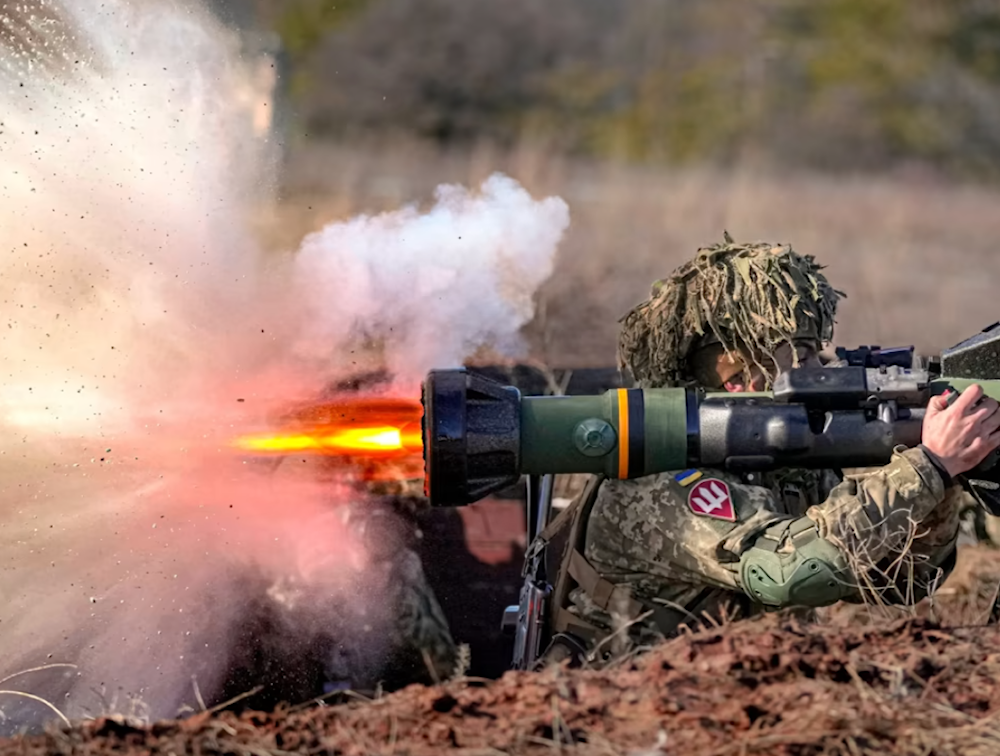How US economy benefits from war in Europe: WSJ
Industrial production in the United States defense and space sectors has surged by 17.5% since the war in Ukraine began.
-

A member of the Ukrainian Armed Forces fires an NLAW anti-tank weapon (AP)
While supporters of Ukraine typically emphasize US strategic interests or moral duties, their blind support may be due to the war also benefiting the economy, The Wall Street Journal reported.
Since the war in Ukraine began, the US defense sector has seen a surge in orders for weapons and ammunition from European allies looking to expand their military capabilities, as well as from the Pentagon, which is purchasing new equipment from defense firms and refilling military supplies depleted by exports to Ukraine.
According to Federal Reserve data, industrial production in the US defense and space sectors has surged by 17.5% since the war began, and administration officials say 64% of the $60.7 billion designated for Ukraine in a $95 billion supplemental military package will come back to the US defense industrial base.
Myles Walton, a military industry analyst at Wolfe Research, stated that the European nations' recent expenditure on US jet fighters and other military gear reflects "a generational investment" whereby the last few years were equivalent to the previous 20 years.
The recent $95 billion assistance plan passed by the Senate, which includes cash for "Israel" and Taiwan, was opposed by Republican friends of presidential candidate Donald Trump.
The reasons they provide for opposing the package are that the US cannot afford to help Kiev while federal deficits grow, Russia will triumph anyway, and the US must improve border security before sending further aid elsewhere.
The additional funding, together with prior agreements, may infuse around 0.5% of one year's GDP into the US industrial military base over several years.
Read more: US pre-positioned arms for Ukraine dysfunctional, poorly maintained
According to the State Department, the US spent more than $80 billion on significant arms purchases in the fiscal year ending in September, with over $50 billion going to European allies—more than five times the historical norm, according to Walton.
Poland has placed orders worth about $30 billion for Apache helicopters, High Mobility Artillery Rocket Systems, or Himars, M1A1 Abrams tanks, and other hardware, the Department said. Germany spent $8.5 billion on Chinook helicopters and related equipment, while the Czech Republic bought $5.6 billion of F-35 jets and munitions.
US main exporter of LNG in 2023
In a related context, the disruption of Russian gas supply caused a substantial increase in European energy prices and inflation, while also increasing European demand for liquefied natural gas from the US, which became the top LNG exporter in 2023, with shipments expected to double by 2030.
Approximately two-thirds of these shipments are sent to Europe.
According to Alex Munton, director of global gas and LNG research at Rapidan Energy Group, five new LNG projects in the United States are under development, with a total investment of over $100 billion.
The bulk of those projects began construction after the start of the Ukraine war, he continued, as the disruption to Europe's gas supply demonstrated the value of LNG to potential financiers and accelerated planned developments.
Foreign sales of big weapons can take years and occasionally fall through. Poland's yearly military budget is around $16 billion, therefore it is unclear how the government would pay for $30 billion in new weapons acquisitions in the near future, according to William Hartung, senior scholar at the Quincy Institute for Responsible Statecraft.
“We know that there are tens of billions in potential contracts on the table for U.S. firms based on the direct and indirect effects of the war in Ukraine, but it’s less clear how soon the companies will see those funds,” Hartung remarked.

 4 Min Read
4 Min Read









